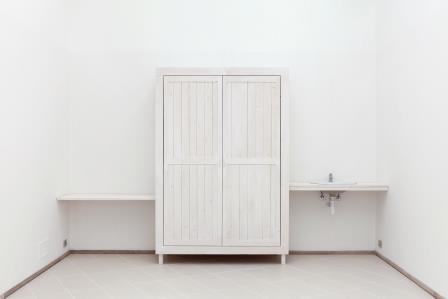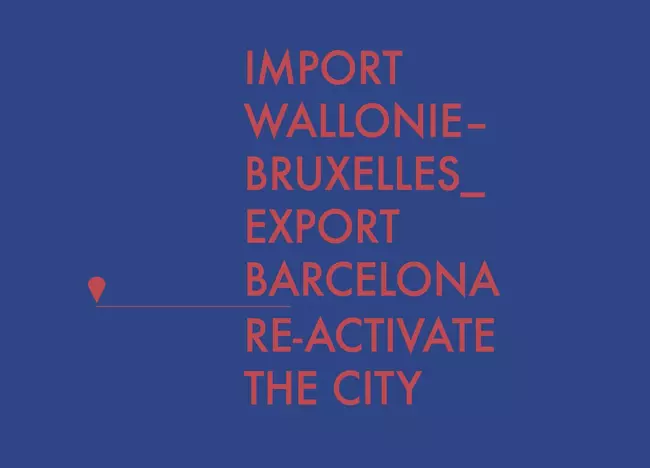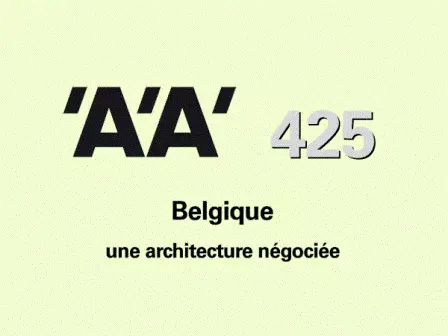- PostsSite Internet
Published on 16/06/2014
Interiors. Notes and Figures

© Maxime Delvaux Introduction of the book Interiors. Notes and Figures published on the occasion of the presentation of the exhibition of the same name in the Belgian Pavillion at Venice Architecture Biennale 2014.InteriorsForms of life. The interior is not absolute. As a living space, it provides the framework for life, but is itself affected by the lives led within it – by their necessities and contingencies, routines and circumstances, capabilities and needs, their degree of control or laissez-faire. Occupying a building means interpreting it – adjusting, modifying, transforming, selecting, rejecting. Analyzing the diffuse and dialogic collaboration between the architect and the occupants (both current and former) offers valuable insights for the discipline of architecture. Designing inhabited spaces means defining the relationship between a domain left to interpretation and a domain thought of as permanent.Life of forms. While changes in economic, demographic and ecological conditions profoundly modify the production of new housing, existing buildings must adapt. This is true wherever real estate inherited from the past no longer corresponds to current needs and lifestyles. Behind the permanence of façades, an internal metabolism generates a life of forms that is correlated to the diversity of forms of life. A study of domestic interiors provides valuable information on issues that are critical to the future of architecture.Vernacular architecture. The interior is both the subject of our study and the perspective from which we operate. Our hypothesis is that a vernacular architectural culture, characterized by the transformations made by occupants, can be observed in a domestic context. It is, however, little documented or analyzed – once construction is complete, it seems that buildings no longer open their doors.Belgian territory. The study began on September 1, 2013. The first step was a photographic survey of domestic interiors throughout Belgium. These were selected according to a theoretical sampling method based on geographical, historical, and typological criteria, modified if necessary according to practical obstacles – of which the principal was people’s willingness to open their doors. The method was simple: the photographer, accompanied by an architect from the team, would arrive unannounced at the selected home. If the occupants were present and willing to participate, the dwelling was photographed. If the occupants refused or were absent, the team would go to a nearby dwelling that met the same criteria. Successful visits were relatively rapid, usually guided by the occupants who pointed out and explained the changes that had been made to the dwelling.Note-taking. The visits offered a succinct and partial opportunity for observation. In relation to an interior that initially presents itself as a unified whole that is resistant to analysis, photography carves up and takes away: in the midst of a continuous and superabundant reality, it focuses intensely on selected criteria. In each dwelling, the same protocol was applied: a frontal, wide-angle, distanced shot. The photographs were indexed according to dwelling type, building date, location, and type of occupancy. Each of them was annotated with observations and comments in the form of both text and diagrams. This empirical material forms the basis of the study.NotesReporting. How do we catalogue the ways in which interiors are inhabited? Why do we want to show the evidence of common and recurrent transformations? How can we make an example of ways of organizing furnishings that are anything but exemplary? How do we translate the sometimes almost imperceptible variations that find their laws and meaning in the manner of inhabitation? What can we learn from the oh-so-familiar ways in which the objects in a room define its status? Answering these questions requires a precise and rigorous accounting method, albeit free from any positivist temptations.Handling. Firstly, there is the handling of the images. Initially comprising 1,247 photographs taken during 256 visits, the archive was progressively slimmed down. The systematic nature of the photographic protocol produced comparable images that highlighted both differences and similarities, therefore permitting a selection. The inventory, consisting of 208 photographs, was organized through their sequence, arrangement, and confrontation. Successive layouts constituted different prototypes suggesting possible stories. The wide angle allowed the particular point of interest to be analyzed in its context. Photographs are accompanied by relevant factual information, as well as a series of texts and drawings.Formulating. Beyond a mere collection of pictures, the composition and practice of a “language of inhabiting” is proposed through the descriptions of the interiors. Inspired by the prospective systematism of Thomas Clerc in his autofictional description of his own apartment, our goal is to establish rigorous and inventive connections between the place, the viewer, and the words. Behind the apparent homogeneity of a domestic landscape, the comparisons, juxtapositions, and organization of the images point towards a plurality of communicating situations. Occupant and architectural rationalities respond to each other through the describable nature of the former and the descriptive potential of the latter. Located at the interface between the form of life and the life of forms, between the situation’s accountability and the exercise of giving an account of it, our study became a search for the right language. The primary requirement was for a vocabulary: objects must be named, situations must be qualified. Producing such a vocabulary meant going beyond the usual professional jargon. Then, there was the need for a grammar and syntax. As a fundamental operator, “invariable” basic terminology allowed us to encode and generalize the spatial relations that articulate the interiors, combining or separating their components.Drawing. The textual interpretation of the photographs is continued through graphic representation. The drawings constitute a new step in the decontextualization process. They operate through separation, superposition, selection, change in scale, and abstraction.The analysis is threefold: the photographs carve up and take away, the texts capture and display, the drawings summarize and generalize. These successive notes are the tools of a project in reverse that encounters a reality. They delineate figures.FiguresDefining a terminology. The figure emerges at the intersection of the photographs, texts, and drawings. It grasps what, in the evolution of domestic landscapes, is inherent to the metabolism of the interiors. It names forms and configurations: for example, an “inalienable object” is one that has become architectural through the loss of its mobility; a “cold hearth” is a group of objects at the heart of a home, often around a fireplace, that makes explicit the transition from an economy based on raw materials to an information economy. Figures are also a way of qualifying the attitudes and the registers of interpretation of a building: the “approximation” is the disparity between the imagined project and the final result. The figure brings to life: “a figure is established if at least someone can say: ‘That’s so true! I recognize that scene’”.*Seeing with words. Whether the forms are imposed, chosen, or involuntary, figures target the causes, but only articulate the consequences. Figures relate to a tangible reality of architecture as it is. Figures gather familiarities found in divergent and sometimes contradictory processes. Establishing figures is a question of seeing with words.Guiding. No a priori logic binds the isolated figures together and determines their contiguity. Strong figures can be said to embody the entire study. Weak figures illustrate it in successive steps. An index lists the significant terms, but also the factual information from which the archive was constructed. Structuring the publication, the index
subverts the inherent linearity of the book and suggests different pathways. The publication is multiple, subject to the various iterations produced by an active rather than a passive reading.Projecting. Naming and assembling the elements of a culture that is specific to the practice of inhabiting allows us to reveal the invisible dynamics of our familiar built surroundings. Beyond words, the figures become architectural operators. The study vouches for the usefulness of these vernacular practices in designing architectural projects that are devoid of any unifying or planning ideology, and lays bare a background process of “becoming” which stands in relation to the specific local environment.Curators: Sébastien Martinez Barat, Bernard Dubois, Sarah Levy et Judith WielanderAuthors: Benjamin Lafore, Sarah Levy et Sébastien Martinez Barat, in collaboration with Mathieu BergerPhotography: Maxime DelvauxGraphic Design: Gregory Dapra et Laure GilettiExhibition in collaboration with Sophie Dars et Benjamin Lafore***Roland Barthes, Fragments d’un discours amoureux, Seuil, Paris, 1977 (*)Andrea Branzi, Domestic Animals the Neoprimitive Style, MIT Press, Cambridge, Mass., 1987
Thomas Clerc, Intérieur, L’Arbalète/Gallimard, Paris, 2013
Xavier De Maistre, Voyage autour de ma chambre,GF Flammarion, Paris, 2003
Harold Garfinkel, Studies in Ethnomethodology, Prentice Hall, Upper Saddle River, 1967
Charles Jencks, Architecture Bizarre, Academy Editions, Denoël, Londres – Paris, 1979
Bernard Rudofsky, Architecture Without Architects, Museum of Modern Art, New York, 1964
Ludwig Wittgenstein, Recherches philosophiques, Paris, Gallimard, 2005
- BilletsAuteur
Audrey ContessePublished on 09/10/2018
-
Allier procédure et processus
"La scène belge est gage de qualité, d’humanisme et de poésie" peut-on lire dans le numéro 425 de l’Architecture d’Aujourd’ hui, dévolu à l [...]
- BilletsAuteur
Emmanuelle BornePublished on 06/07/2018
-
Belgitopie
Faut-il se fier aux expositions internationales, a fortiori à la Biennale d’architecture de Venise, pour appréhender les mouvements de fond et enjeux [...]



